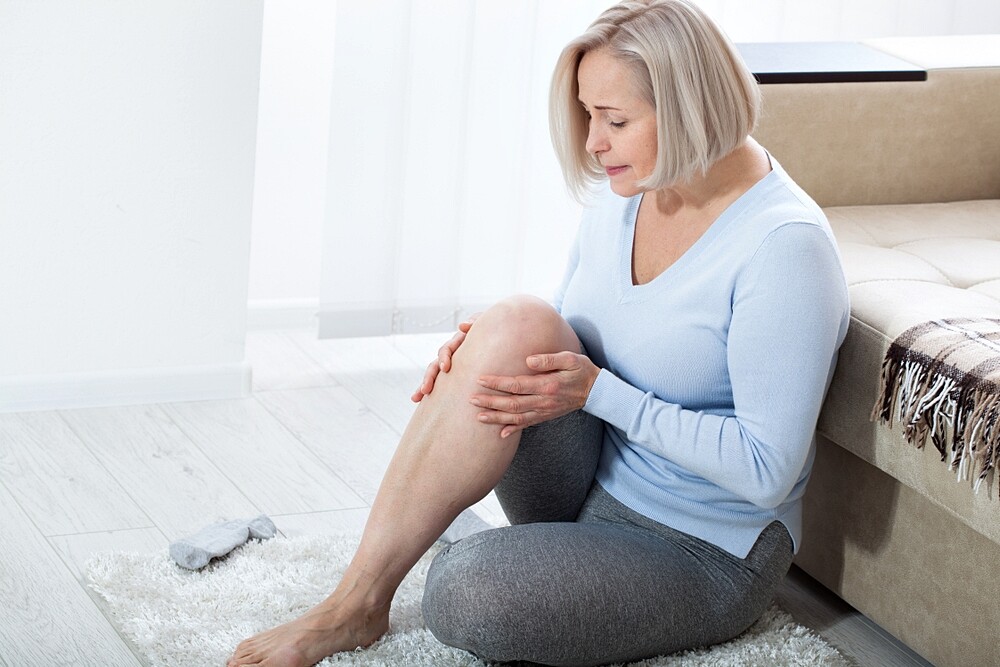Limb pain can have many different causes. Here we reveal typical triggers and how you can get rid of the pain.
What is limb pain?
Limb pain can occur in all age groups and refers to pain in the arms or legs. Mostly it is a symptom of another disease and is caused by rather harmless reasons like a cold or sore muscles, but it can also have a more serious cause like a tumour. Pain in the limbs is always treated according to the trigger.
Limb pain can occur anywhere on the limbs:
- on the upper and lower arms,
- the shoulders,
- the elbows and hands,
- but also on the hip,
- thighs and lower legs
- and the knees and feet.
The type of pain can be just as varied: it can be mild or severe, occurring on one or both sides and can be pulling, biting or stabbing. All of these can make it difficult for the doctor to determine the exact cause of the pain in the limbs. Depending on the duration and intensity of the pain, many different triggers may be possible. The older we get, the more the general risk of limb pain increases.
Acute and chronic limb pain
A distinction is made between acute and chronic limb pain. The acute form can often be attributed to temporary illnesses such as infections or muscle injuries. Women are more frequently affected by chronic complaints than men. The pain persists for at least three to five months without interruption and cannot always be clearly located. Various factors play a greater role in their development. These include:
- Emotional state: depression and anxiety disorders, stress
- Lifestyle: smoking, increased alcohol consumption, overweight and physical activity
- Workplace circumstances: Constant sitting, great physical effort, general job satisfaction
Causes: How does aching limbs develop?
The possible causes must also be distinguished between acute and chronic pain:
Acute limb pain in arms and legs:
- Influenza, (real) flu or measles. Other symptoms such as fever, headache and tiredness often occur.
- Sports injuries, e.g. due to falls or overstretching
- Incorrect strain, e.g. due to poor posture or foot malpositions
- Thromboses or embolisms
Acute arm pain:
- Tennis elbow
- Inflammation of tendons e.g. in the shoulder or forearm
- Pain radiating into the arm
Acute leg pain:
- Inflammations, e.g. of the Achilles tendons or the patella
- Bursitis of the hip
- Heel spur
- Irritated sciatic nerve
- Muscle Tension
Causes of chronic limb pain
If chronic limb pain is present, the causes are often of a more serious nature. If the pain persists for months or even years, limb pain is no longer considered a symptom but an independent disease. The following causes can be responsible for the acute form of the disease:
- Rheumatic diseases like arthrosis and arthritis
- Osteoporosis
- Inflammation of tendons
- Circulatory disorders
- Tumours
- Nervous diseases
- Low back pain
When should I see a doctor for aching limbs?
If the pain lasts longer, becomes stronger and/or cannot be attributed to a simple cause such as a cold, a visit to the doctor is advisable. Otherwise there is a risk that the pain in the limbs will become chronic. The earlier the treatment takes place, the lower the risk – and the sooner the pain is relieved.
Treatment: What helps with aching limbs?
As a rule, limb pain is treated according to the cause. This does not always have to be done by a doctor – if a quite harmless infection is behind the complaints, it is often enough to rest and take pain-relieving medication. Some patients also feel relief when they put cool compresses around their limbs as a home remedy.
If excessive or incorrect strain is the trigger for limb pain, the following tips can help:
- Targeted build-up training for underdeveloped musculature
- Pay attention to a straight posture
- For frequent sitting: Get up every hour and walk back and forth a little
- Take breaks from computer work
- Lose excess weight
- Correct foot malpositions e.g. with orthopaedic insoles
- Avoid one-sided sporting strain, instead strength training is suitable for all muscle groups
- In case of inflammation (e.g. tendonitis), relief is advisable
A generally healthier lifestyle helps to prevent limb pain in the first place. This includes a balanced, healthy diet, exercise in the fresh air and not smoking. Even stimulants such as alcohol should only be consumed in moderation to prevent limb pain.

